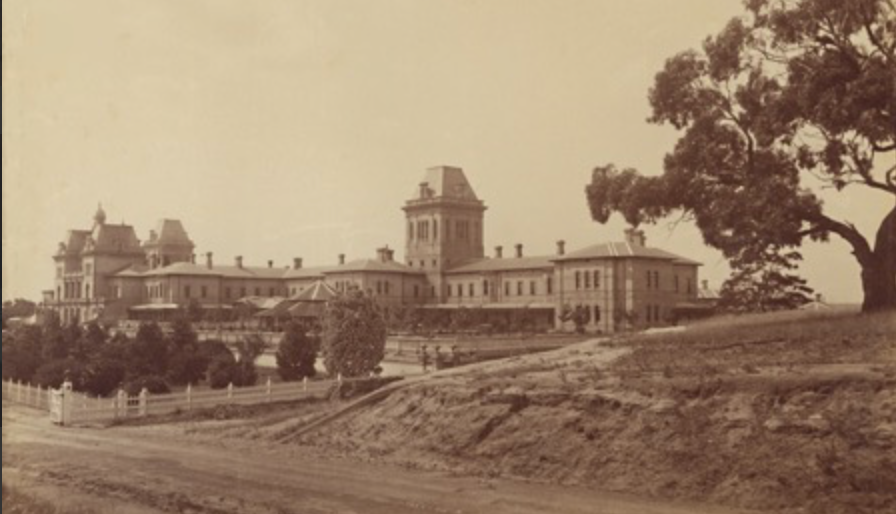'The Barrier': Abstractionist Graham Fransella at Australian Galleries 2022
- Andrew McIlroy
- Aug 16, 2022
- 4 min read
Updated: Sep 3, 2022

These works are more speculative in nature than previous pictures. There is less a pre-ordained outcome. Rather they embrace spontaneity, chance impulse and accident. The use of collage extends my interest in drawing and using gouache, which is fast drying, allows working through ideas in a more immediate fashion. Although informed by sketches done in the landscape, the pictures are ultimately arrived at by the activity of their making.
Graham Fransella, 2022
Graham Fransella is perhaps being modest in describing his latest body of work at Melbourne's Australian Galleries as ‘speculative’. The artist has been assuredly at the forefront of bold abstractionism, resisting trends in art that value complex technique and narrative over simplicity and form, earning Fransella the admiration of other prominent artists.

Graham Fransella, 'Figure by Dam' (2021) Photo: Graham Fransella

Graham Fransella, ‘Gorge’ (2021) Photo: Australian Galleries
Before he sadly succumbed to cancer in October 2020, Fransella’s close friend and admirer artist Geoffrey Dyer was renown for his thickly rendered landscapes and expressive, fraught portraits often of his fellow Tasmanian artists, and equally famous for his hard-drinking lifestyle. Each came hand-in-hand it seems, the latter fuelling the artist’s long days in the studio and prodigious output. To accompany the gregarious Dyer as he worked to exhaustion undoubtedly brought its own challenges and rewards.
In early 2006, Dyer visiting Fransella’s Melbourne studio came upon the idea of painting his friend’s portrait for the looming Archibald Prize at The Art Gallery of New South Wales. It suited both artists in the circumstances that the painting was to be finished at the one sitting.
“I just started off in the morning and thought I’d see how I go,” said Dyer. “By eight o’clock that evening I was a bit of a mess but there he was. The following morning, I looked at the portrait again and wondered, ‘Have I got him?’ A friend came around and gave me the thumbs up.”

Geoffrey Dyer, ‘The Abstractionist’ (2006) Photo: The Art Gallery of New South Wales

Tasmanian artist Geoffrey Dyer (1947-2020) Photo: The Mercury
As for painting a fellow artist, Dyer said: “I think you can take more liberties because painters understand the language.”
Like Dyer, Fransella throughout his career catalogue of drawings, paintings, print-making and sculptures has long taken liberties with artistic language, his abstract works defined by casual markings, expressive lines, gathered shapes and pared down images as seen in his outlined figures, their heads, shoulders and elongated limbs providing form, free of excessive detail.
It was a style of making art that had its beginnings for the young artist at art school.
“In art school, figure drawing often begins with a series of five-minute sketches. They serve as a warm-up before the more concentrated fully rendered drawings that usually follow. However, these rapid preliminary sketches often prove more satisfactory than the finished works. The limited timeframe forces the artist to observe and act spontaneously. There is no time to worry about mistakes or attempt to rectify them. Sometimes the artist is surprised by his or her own capacity for drawing, but the challenge is how to sustain the freshness and immediacy of expression through the more considered and technically exacting acts of painting and printmaking.” (Fransella, p39)

Graham Fransella 'Entrance' (2021). Photo: Australian Galleries

Graham Fransella, 'Barrier landing' (2021) Photo: Australian Galleries
Dyer’s grasp of Fransella’s rudimentary style was characteristically both insightful and to the point.
“He is an abstractionist who uses strange figurative outlines against landscapes evoked through dense, textural, linear, coloured surfaces. What may at first appear to be primitive through Fransella’s use of simple, bold outline, becomes symbolic and multi-layered in its meaning with a blurring between landscape and figure.” (The Art Gallery of New South Wales)
In the introduction to Fransella’s book Graham Fransella: Figures and Landscapes, Edmund Capon, Director of the Art Gallery of New South Wales, was similarly enthusiastic: “What his paintings do have is an echoing sense of absence; of a figure that once was there but is no more and yet its mysterious presence still lurks on the surface of the canvas.”

Graham Fransella, ‘Untitled’ (2021) Photo: Graham Fransella

Graham Fransella, ‘Map’ (2021) Photo: Australian Galleries

Graham Fransella, ' Figure on sand' (2019) Photo: Australian Galleries
Fransella’s 2022 Australian Galleries exhibition is a continuation of the artist’s life-long fascination with the landscape and its abstract portrayal via a range of media; paint, gouache, collage, sculpture and print. But the scale of this exhibition speaks to the reach of this artist and the intensity of his practice, culminating in such a burst of creativity and a layering of sophistication within the work that at first glance appears missing but on closer inspection is found hiding in plain sight.
Dyer was right. Fransella truly understands the language of making good art, taking liberties during the creative process that later inform the conceptual content of his work; “In the end the activity of picture-making, randomness, spontaneity, chance, accident and mark making play out their role to arrive at a resolution.” (Beaver Galleries, Canberra)
Fransella’s works are timeless, full of the energy and verve of the moment in which they were created. Looking back on them the next day I suspect Fransella like Dyer would understand at this point, there is nothing more left to do.

Graham Fransella

Graham Fransella, Studio 2022 Photo: Graham Fransella

Installation shot (2022) Photo: Andrew McIlroy

Installation shot (2022) Photo: Andrew McIlroy

Installation shot (2022) Photo: Andrew McIlroy

Installation shot (2022) Photo: Andrew McIlroy
‘Graham Fransella: The Barrier’ opens at Australian Galleries on 25 August and runs to 17 September
When & Where:
Australian Galleries, 35 Derby Street, Collingwood VIC 3066 t (03) 9417 4303
About the author:
Andrew McIlroy is an artist and arts writer, living and working in Melbourne, Australia



Comments